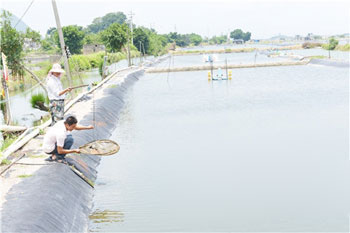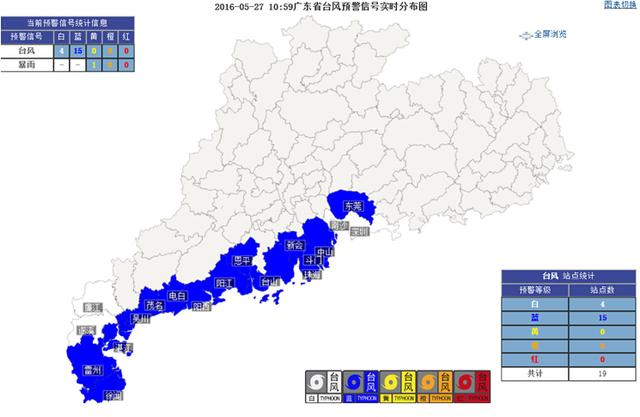Big data is worried about poverty alleviation and the privacy of poor families is difficult to stay.
Original title: big data's advance and hidden worries in poverty alleviation

Poor households introduce the use of QR codes to reporters (network photo: Sichuan Rural Daily)
In recent years, with the wide application of "big data" in various fields, using big data to promote the precision of poverty alleviation has been constantly mentioned. The emergence of the Mashan incident in Guangxi in 2015 has made people expect and believe that big data has greater power in "accurate poverty alleviation". Indeed, China's poverty-stricken population has a large base and the situation is complex, which was previously restricted by the level of science and technology. for a long time, the relevant departments have mainly used manual data collection and later analysis to formulate relevant policies. this affects the effect of poverty alleviation to a certain extent.
The use of the thinking and method of "big data" is tantamount to an extra pair of eyes to distinguish between "real poverty" and "false poverty". Some media quoted the staff of the poverty alleviation department as saying: "in the past, there were three houses in his family. If he said there was one, I could only believe it." Now, I know where the three stores of their family are. " It is also reported that the causes of poverty caused by poor households (villages) are also recorded in detail in the poverty alleviation information systems in some areas. These undoubtedly provide a more scientific basis for the formulation of poverty alleviation policies in line with the actual situation.
However, the sound of "big data helping the poor" still gives rise to a trace of hidden worry. First of all, "big data poverty alleviation" focuses on "poverty", that is, the poor people or groups who are the objects of "helping". In big data's view, poor groups and their assets, income, jobs, etc., can be abstracted as a pile of cold data called "poverty", but in real life, there are real people standing behind these data. They have their own marriages and funerals, birth, old age, sickness and death, joys and sorrows. As we all know, modern people pay attention to privacy, and no one wants their life data to be made public. Especially for the poor, their meagre income, cramped housing, poor circumstances, difficult life, and the so-called "causes of poverty", or even being "supported" as a member of the poor, are things that they do not want and should not be exposed at will.
What's more, in this large number of poor families, there are many minors, perhaps because of the effectiveness of poverty alleviation, the favor of opportunities and personal struggle, these children later changed their fate and led a decent life; or perhaps for various reasons, they helplessly inherited the poverty of their parents. In any case, the poor experience of childhood should not be exposed to the world like a brand. And once all these are big data or cloud, the risk of leakage also increases.
Therefore, in the era of big data's poverty alleviation, due to a more detailed grasp of the information of the poor, the task of poverty alleviation departments to examine the information of the poor from door to door has been reduced, while the task of maintaining the information security of the poor has become even heavier. At the same time, in the process of poverty alleviation work, the information of poor areas and population situation is dynamic; moreover, the more effective the poverty alleviation work is, the greater the frequency and scope of information change will be. The information used as the basis for decision-making will not be updated automatically, which requires poverty alleviation departments to strengthen the construction of hardware and software, improve the frequency of data tracking and update, and make the data as updated and accurate as possible, so that its reference value to the work can be maximized.
Secondly, due to the use of big data, the processing of "poverty data" will become a major task for poverty alleviation departments, which objectively requires staff to work more in the office. Access to the homes of the poor may reduce the chances of face-to-face communication with them. But we know that what the poor need is not only a bag of rice, a pot of oil or a job opportunity, but also emotional comfort. In fact, poverty alleviation workers have not only knocked on the doors of the poor, but also opened the psychological door for them to change their lives. Of course, the convenience and efficiency brought about by big data may also extricate poverty alleviation workers from the heavy data collation work and spend more time and energy on in-depth exchanges with the poor, but all this depends on the adjustment and setting of the system.
In fact, whether it is the Mashan incident in Guangxi or some other problems that have emerged in poverty alleviation work in recent years, it is not so much a "failure" of data as a "failure" of the system, that is to say, big data is just a tool used to "observe" the situation of poverty. however, to really "see" poverty and the pain it brings to people, and to take effective actions, we need to rely on institutional construction other than big data. Otherwise, even if the poor big data is put in front of the relevant departments, it is still possible to turn a blind eye to the "real poverty" but frequently winkle at the "fake poverty".
The progress of science and technology always shows us a beautiful new world that people look forward to. In this regard, while warmly cheering, we should also think calmly. Whenever science and technology advances an inch, the system often needs to move forward by a foot, so that it can really benefit people. The same is true of big data's poverty alleviation. (eyebrow ruler)
- Prev

The "cheap fish hurt fishing" can be alleviated.
The "cheap fish hurt fishing" can be alleviated.
- Next

Typhoon warning of tropical depression carrying rain in 19 cities and counties of Guangdong Province
Typhoon warning of tropical depression carrying rain in 19 cities and counties of Guangdong Province
Related
- A course of planting techniques and methods on how to grow carrots
- How to plant the latest tulips?
- Is it better to pick tea in the morning or in the afternoon? When is the best time for tea to be picked? what is the third or fifth tea?
- Launch Yuanxiao Happy combination Haocha + Tea Yuan healthy Taste
- Penghu Tourism "Fireworks 20 Parade with You"
- 2022 West Lake Happiness holds "Digital Revitalization Voucher" and draws iphone13 and laptop.
- Banqiao Fuzhou social houses are designed to change start-up combined with police elimination to create a safe and livable environment
- The convenient measure of "mechanical weeding" in Xinbei has been abused and the Agriculture Bureau has imposed heavy penalties on the illegal land consolidation.
- Changgeng University Joins Hands with Four Memory Factories to Rescue Memory Talent Shortage
- The list of Taiwan's top 100 MVP managers is listed by the Director-General of the Farmers' Association of Sanxia District.

